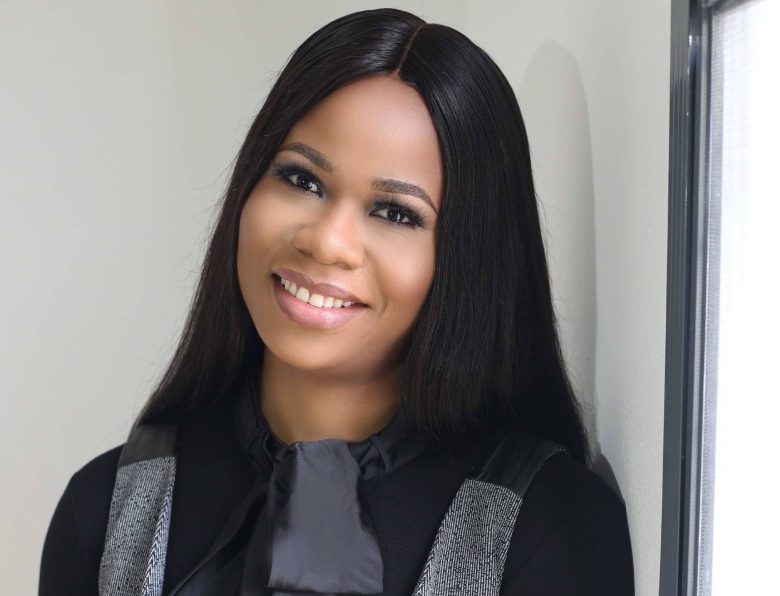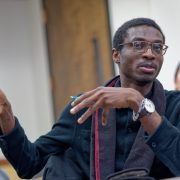“The shortlist is an encouragement to release more of the stories that I’ve been keeping” – Oyin Olugbile.
By Evidence Egwuono Adjarho
Among the three books that made it to the Nigeria Prize for Literature shortlist emerges a debut novel, Sanya. Of all three novels in the list, Sanya easily stands out for its tilt towards the fantastical and the creativity it reflects.
Yet, what makes this book a worthy opponent is not merely the striking difference in the genre but also the source of inspiration Oyin Olugbile taps into. It is the attempt to reimagine the story of an important god in Yoruba mythology: Sango. Sanya then becomes a novel that serves the Latin dual purpose of Art: utile et dulce.
In this interview, Olugbile talks about her creative journey into writing her first-ever novel as well as the importance of the story she has told.
When did you first know you were going to write Sanya, and how long did the writing process take?
The background to writing Sanya is that I studied Creative Arts at the University of Lagos. Whilst there, we studied Yoruba gods like Ogun, Sango, and Oya. We were able to experience them through readings and plays, not through prose writing. But the fact remains that the knowledge was there.
Fast forward to 2017, I was doing my research about something, and I stumbled upon the story again. It then occurred to me that some things weren’t adding up in terms of the features and characteristics of Sango as a god, or as an individual. So, I did a lot of digging, searching, and researching. Then I told myself that I was going to write a story about Sango, using the things that don’t add up, which was the fact that he could actually have been a girl. That was how I got started. After this, I pitched my idea to my husband, and he found it interesting. That was my Eureka moment.
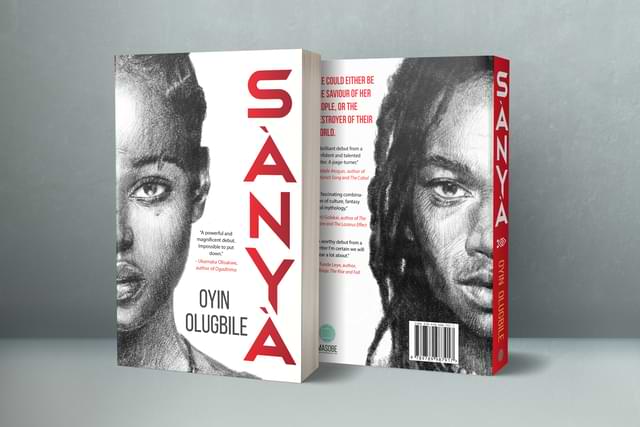
You seem to have a busy life and career outside of writing, along with family responsibilities. Why do you write, and what does writing mean to you personally?
The writing itself is not as interesting as the conceiving of the story for me. In fact, I pride myself on saying that I’m more of a storyteller than a writer. Writers will tell you how difficult it can be to write, and that’s why it takes so long for us to finish writing a book.
So, the interesting part of it for me is when the story comes into my head. I get excited and begin to plot everything, including the character development. But when it’s time to write, I begin to ask myself why I have to do it. Anyway, I write because I have to tell the stor,y and people have to read it.
I also write because I enjoy telling stories. Storytelling comes to me as easily as eating or drinking water. As for the time factor, the truth is there’s no time. It then becomes a matter of urgency and necessity to put your thoughts, ideas, and your story into a piece of paper, so that you can keep it there. So, for us writers, putting our stories into the form of a book is to preserve the stories.
Your debut novel leans into the fantastical. Have you always been drawn to fantasy, or was Sanya your first foray into the genre?
I have always been drawn to fantasy. I grew up reading books like The Prince of Persia, and Olympus. I also read all of the Harry Potter series. But most importantly, I’ve been drawn to mythology. But I also enjoyed reading, so that by the time I turned ten, I’d read all the books in his library, and there were over 200 books in that library. So, yes, I definitely have been drawn to not just fantasy but also reading. This explains why when the idea for Sanya came, my mind and my heart tilted towards that genre.
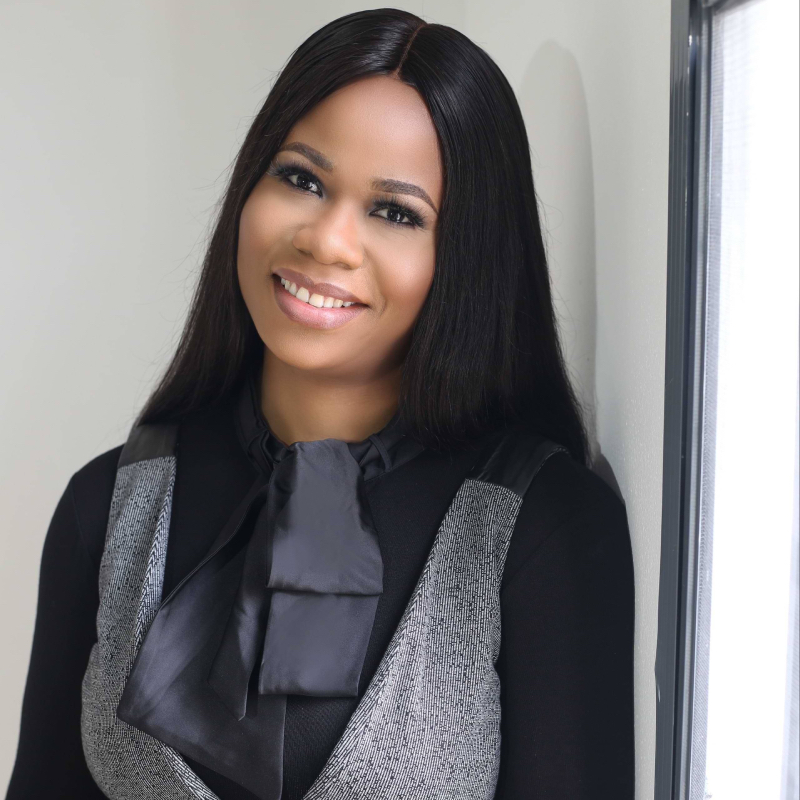
Sanya is a reimagination of the story of Sango, a central figure in Yoruba mythology. How did you navigate that balance between creativity and authenticity?
I don’t think creative writers have any business with authenticity. It’s only academic writers who worry about all those things. The societal definition of being authentic is staying true to some things or some norms. If we stay true to some norms, it now becomes theoretical, rather than creative, because I have to defend and bring out facts.
Rather than authenticity, one of the things that I learned and deployed are my three main writing skills: fiction, faction, and reality. Fiction is something derived from the imagination. Faction is knowledge gotten from something one has read and researched that can be backed up with evidence.
The reality is bringing all of my writing into an everyday life that people can relate to. So it’s why you will find yourself in these characters like Sanya and Dada, even though these characters probably never even existed. And when you ask whether you were being authentic in your story, the answer is yes, as long as you’re not plagiarising anyone or telling anybody’s story.
The beauty of creativity is that no matter how much of an excellent writer I think I might be, there are still millions of people out there who have been blessed with the same grace in their heads and minds. This is why two stories might seem similar. But there will be differences in them as long as one person is not stealing the other person’s idea. This is how authenticity and creativity intertwine and play out.
Sanya is as much about love as it is about war—love between siblings, between lovers, between women. What message about love were you hoping to convey through these portrayals?
Love is very delicate. Sometimes, when you see the relationship between two people and you don’t understand it, you question why the relationship exists. And if you have ever loved anyone, and anybody asks you why you love the person, you can’t answer it. Sanya loving Ossosi was very deliberate, and it was to show that even as tough as she was, her heart could be soft for someone else.
The truth is that it’s not just one person that Sanya loved. Sanya seemed to love everyone, and I’m quite certain that a lot of readers miss that trait in Sanya because all they saw was this tough lady.
However, while she appeared really tough on the exterior, she was still a woman and human at the same time. The romantic part of the story was there for creative purpose,s but the fact is that when you start to read Sanya from the beginning to the very end, all it’s about is love.
Your novel ends on an inconclusive note. Should readers expect a continuation or a second part?
Yes, actually. There’s gonna be a sequel, and it will be out soon.
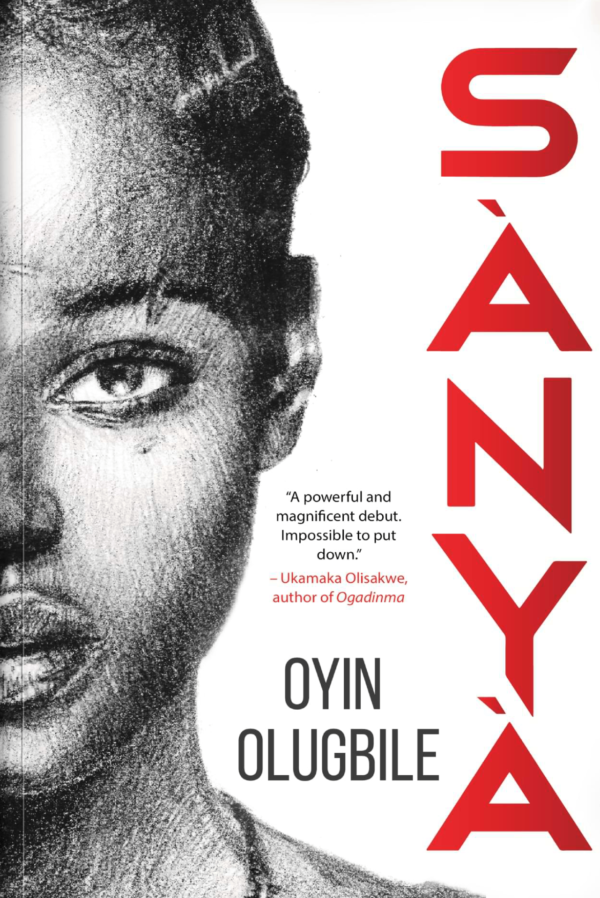
Sanya has been shortlisted for the NLNG Prize. What does this recognition mean to you as a writer?
It means a lot. This shortlist means that I’m actually doing something good and that I’m good enough for a global audience or global reader to pick up my book to read. The shortlist is an encouragement to release more of the stories that I’ve been keeping.
And if you were to win, what would that victory mean to you—both as an author and as an individual?
As far as I’m concerned, this is winning already. We came all the way from over 200 entries to the top 3. It’s the right validation I need because sometimes, we need to be told that we are doing the right thing.
What are three African books you would always recommend, and why?
Top on the list is Ake (1981) by Wole Soyinka. It talks about his formative years, and I think everyone should read it. The next one is Half of a Yellow Sun (2006) by Chimamanda Ngozi Adichie. The importance of reading this book cannot be overemphasised.
The last one is Elechi Amadi’s The Concubine (1966). I’d like to leave with the last lines of the book, which have stuck with me since the last time I read the book in my early days: “The spirit of Death was known to take away people’s souls shortly after midnight. That was when Ekwueme died”.
Evidence Egwuono Adjarho is a dynamic and evolving creative with a flair for literature and the arts. She finds joy in reading and writing, and often spends her free time observing the world around her. Her interests span a wide range of artistic expressions, with a particular focus on storytelling in its many forms including photography.


